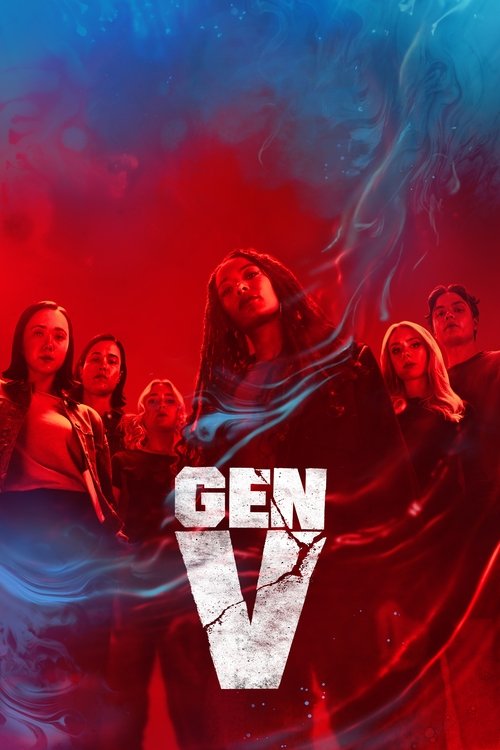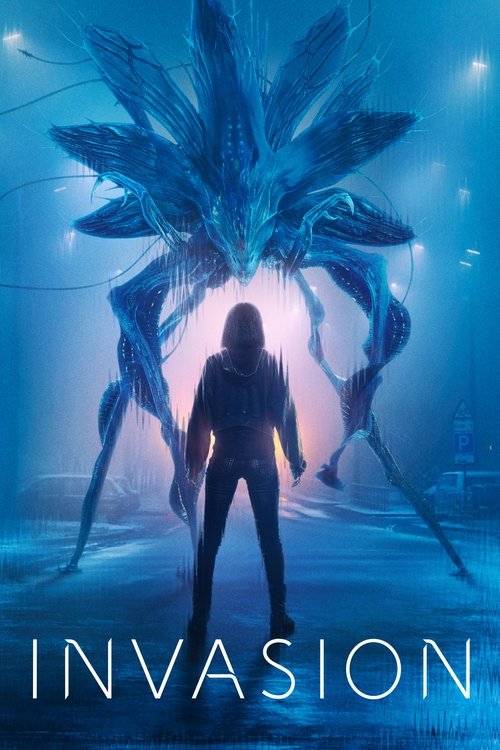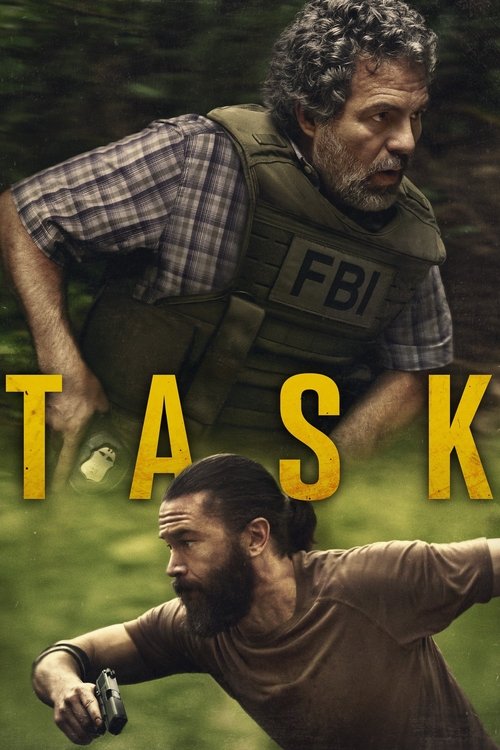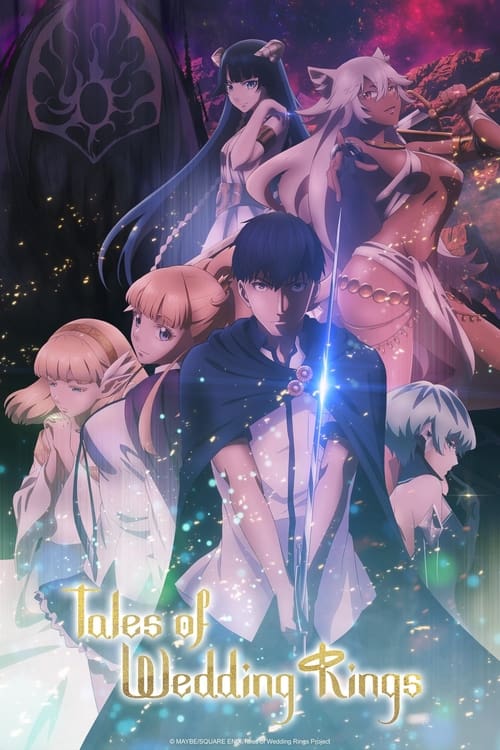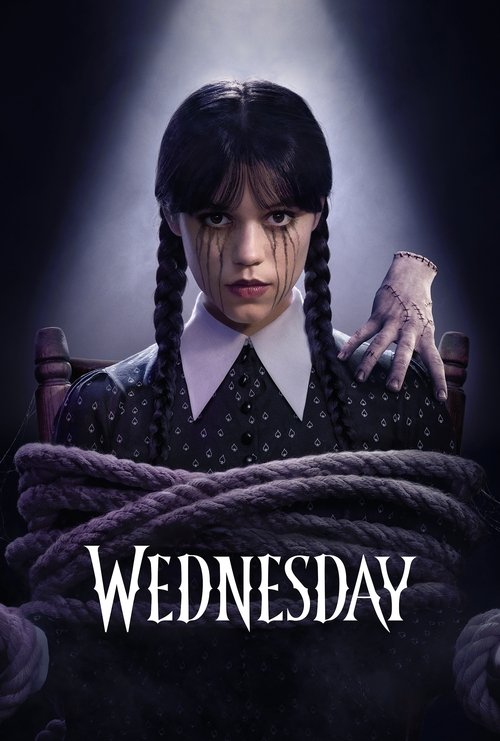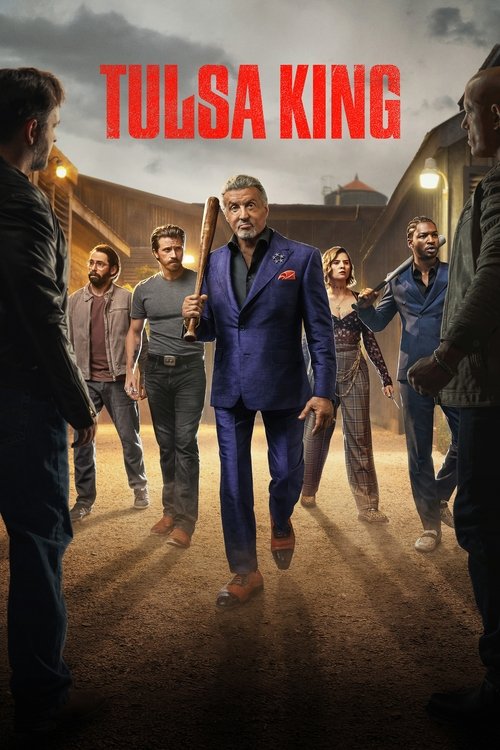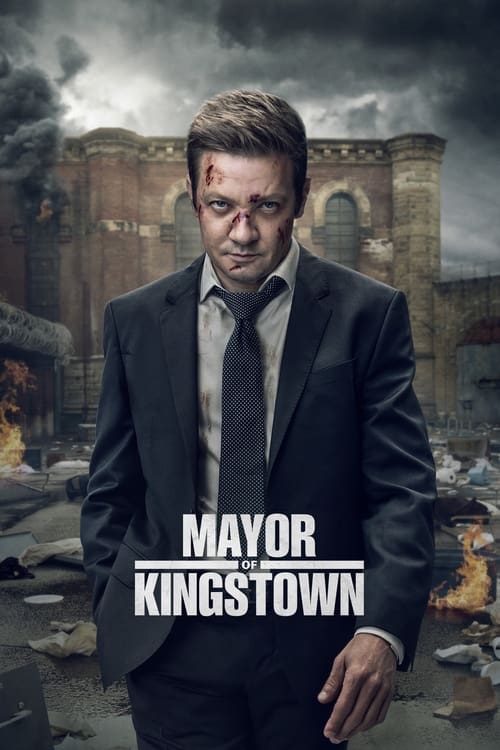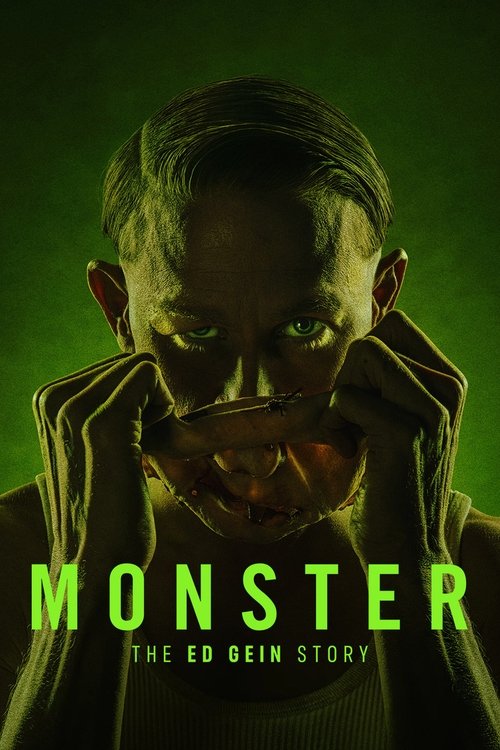Endings Explained
Get detailed explanations of how movies and TV shows end. Warning: Contains spoilers!
How does it end?
⚠ Spoiler – click to reveal
The ending of Gen V season 1 culminates with Cate convincing Sam to free the imprisoned Supes in the Woods, sparking a violent uprising against humans on the Godolkin University campus. Despite efforts by Emma, Marie, and Jordan to stop the chaos, the campus descends into bloodshed. The conflict ends abruptly when Homelander arrives, sides with Cate and Sam, and fatally attacks Marie, leaving the main heroes captured and the campus in turmoil, setting up a tense cliffhanger for season 2.
The finale unfolds with Cate persuading Sam to help her break the young Supes out of the Woods, a secret lab where they were imprisoned and experimented on. Cate delivers a rousing speech to the inmates, inciting them to rise up against humans, whom they see as inferior. This sparks a violent rampage across the campus, with the freed Supes killing any humans they encounter.
Emma, Marie, and Jordan rush to intervene but arrive too late to prevent the uprising. Emma finds Sam in the performing arts center and tries to reason with him, but Sam, emotionally numb due to Cate's powers, rejects her and joins the violent revolt. Sam clashes with Andre, who has just visited his hospitalized father, Polarity. Andre struggles but manages to use his magnetism to grab a taser and subdue Sam.
Meanwhile, Ashley Barrett from Vought offers Marie a place in the Seven if she kills Cate to stop the chaos, promising a reunion with Marie's sister as incentive. Marie confronts Cate but does not intend to kill her. During a fight involving Jordan and other ex-Woods inmates, Cate approaches Jordan, prompting Marie to panic and accidentally sever Cate's arm below the elbow.
As the battle continues, Cate manipulates Dean Shetty into slitting her own throat, removing a major antagonist. Marie uses the trauma of accidentally killing her parents to gain better control of her powers, helping to subdue the rogue Supes. Jordan demonstrates genuine heroism by saving humans, contrasting with earlier PR-spun heroics.
Just as Marie and Jordan celebrate their victory, a distraught Cate approaches, attempting to compel Jordan to fight Marie. Instead, Marie blows off Cate's arm, escalating the conflict.
Suddenly, Homelander arrives, summoned by Ashley. He lands dramatically in front of his statue on campus and immediately asserts dominance. When Marie tries to speak with him, he warns her to stop and then uses his heat vision to strike her in the stomach, cutting to black on this shocking moment.
The final scenes show Marie, Andre, Jordan, and Emma in a sterile, doorless medical room, apparently in custody but alive. Their fate is uncertain, trapped in a clinical environment with no clear escape, hinting at further developments in season 2.
In summary, Cate and Sam lead a Supes revolution fueled by supremacist ideology, Homelander aligns with them, and the main heroes are captured, leaving the campus in chaos and the story poised for continuation. Marie survives Homelander's attack, impressing Andre, but the group's imprisonment raises new questions about their future.
How does it end?
How does it end?
⚠ Spoiler – click to reveal
Short Narrative Ending: In the ending of "Nobody Wants This," Joanne and Noah face significant challenges in their relationship due to external pressures from their families and societal expectations. The season culminates with an impossible decision that tests their love and commitment to each other.
Expanded Narrative Ending:
The final episodes of "Nobody Wants This" unfold with Joanne, a carefree sex and relationships podcaster, and Noah, a charismatic rabbi, navigating their blossoming relationship amidst intense scrutiny. Their families, particularly Noah's mother, are strongly opposed to their union, citing religious and cultural differences. This opposition creates tension and forces Joanne and Noah to confront the reality of their situation.
As the season progresses, Joanne's family also expresses their concerns, adding to the pressure on the couple. Noah's career as a rabbi is another significant factor, as his relationship with Joanne could jeopardize his professional future. The couple must decide whether their love is strong enough to overcome these obstacles.
In the climactic finale, Joanne and Noah are faced with an impossible decision: whether Joanne should convert to Judaism to appease Noah's family and potentially secure their future together, or if they should pursue their relationship without compromising their individual identities. This decision weighs heavily on both characters, as it involves not just their love for each other but also their personal beliefs and values.
The fate of Joanne and Noah hangs in the balance as they grapple with this choice. Ultimately, the season concludes with a dramatic moment that leaves viewers questioning the future of their relationship. The ending highlights the challenges faced by couples from different backgrounds and the difficult choices they must make to be together.
Throughout the finale, the emotional states of Joanne and Noah are palpable. Joanne struggles with the idea of converting, which would require her to adopt a new faith and potentially alter her sense of self. Noah, on the other hand, is torn between his love for Joanne and his loyalty to his family and community. The tension between them is evident as they navigate this critical juncture in their relationship.
The supporting characters also play significant roles in the finale. Joanne's family members express their concerns and doubts about the relationship, while Noah's family, particularly his mother, remains adamant in their disapproval. These interactions add depth to the narrative, showcasing the broader societal and familial pressures that Joanne and Noah face.
Ultimately, the ending of "Nobody Wants This" leaves viewers with a sense of uncertainty, wondering if Joanne and Noah will find a way to overcome their challenges and build a future together. The conclusion sets the stage for potential future seasons, where the couple might explore new paths and confront the consequences of their decisions.
How does it end?
⚠ Spoiler – click to reveal
In the final episodes of My Hero Academia's first season, the students of U.A. High School face off against the League of Villains during the U.A. Sports Festival. The climax centers around the intense battle between All Might and the villain All For One, leading to All Might's retirement. The students, particularly Izuku Midoriya, learn valuable lessons about heroism, friendship, and the weight of their responsibilities.
As the season concludes, Midoriya and his classmates are left to reflect on their growth and the challenges that lie ahead, setting the stage for their future as aspiring heroes.
The final episodes of My Hero Academia unfold with a palpable tension as the U.A. Sports Festival reaches its climax. The atmosphere is electric, filled with the cheers of spectators and the determination of the students. The festival, which was meant to showcase the talents of the aspiring heroes, takes a darker turn as the League of Villains makes their move.
Scene 1: The festival arena is bustling with excitement, but the mood shifts when the broadcast is interrupted by the League of Villains. Their leader, All For One, appears on screen, declaring war on heroes and challenging the very foundation of society. The students, including Izuku Midoriya, Shoto Todoroki, and Katsuki Bakugo, watch in horror as the villain's intentions become clear. The stakes are raised, and the students realize that their training is about to be put to the ultimate test.
Scene 2: The scene transitions to the U.A. campus, where the students are gathered in a tense meeting. Principal Nezu and the faculty discuss the threat posed by the League of Villains. All Might, the Symbol of Peace, stands at the forefront, his expression grave. He reassures the students, but internally, he grapples with the reality of his declining power and the burden of his legacy. The students, inspired by All Might, vow to protect their school and each other.
Scene 3: The confrontation escalates as the League of Villains infiltrates the U.A. grounds. The students spring into action, showcasing their unique Quirks. Midoriya, driven by his desire to protect his friends and prove himself, leads the charge. He uses his newfound control over One For All, demonstrating remarkable growth. The battle is fierce, with each student facing their own challenges, but they work together, embodying the spirit of heroism.
Scene 4: The climax of the battle arrives when All Might confronts All For One. The two titans clash in a spectacular display of power. All Might, despite his weakened state, fights with unwavering resolve, embodying the ideals of a true hero. The fight is not just physical; it is a battle of wills, with All Might determined to protect the future of hero society. The emotional weight of the moment is palpable as All Might reflects on his journey and the legacy he will leave behind.
Scene 5: In a final, desperate move, All Might unleashes his full power, delivering a devastating blow to All For One. The villain is defeated, but the victory comes at a cost. All Might, exhausted and on the brink of collapse, realizes that this battle marks the end of his era as a hero. He collapses, and the students rush to his side, their expressions a mix of admiration and concern. All Might's retirement is a poignant moment, symbolizing the transition of heroism to the next generation.
Scene 6: The aftermath of the battle leaves the students reflecting on their experiences. Midoriya, Todoroki, and Bakugo stand together, contemplating their futures as heroes. They understand that the path ahead will be fraught with challenges, but they are determined to carry on All Might's legacy. Each character is left with a sense of purpose, ready to face the trials that await them.
As the season concludes, the fate of the main characters is clear. Izuku Midoriya continues to grow as a hero, inspired by All Might's teachings. Shoto Todoroki embraces his identity and strives to forge his own path. Katsuki Bakugo, while still brash and competitive, begins to understand the importance of teamwork and camaraderie. The bonds formed during the festival and the battles against the League of Villains solidify their resolve to protect others and uphold the ideals of heroism.
The ending of My Hero Academia's first season encapsulates the journey of these young heroes, highlighting their growth, the weight of their responsibilities, and the legacy they must uphold as they step into a world filled with both hope and danger.
How does it end?
⚠ Spoiler – click to reveal
In the ending of SPY x FAMILY, the Forger family faces a critical moment as they confront the threat posed by the organization known as Eden Academy. Twilight, also known as Loid Forger, successfully completes his mission to prevent a war between the rival nations of Ostania and Westalis. Meanwhile, Yor, the assassin known as Thorn Princess, protects her family while grappling with her own feelings of love and duty. Anya, their telepathic daughter, plays a crucial role in uniting her parents and ensuring their safety. The family ultimately solidifies their bond, embracing their roles in each other's lives, even as they continue to keep their true identities hidden from one another.
As the story unfolds, the final scenes depict a tense yet heartwarming resolution.
The episode opens with Loid Forger, dressed in his spy attire, preparing for a critical mission that could determine the fate of the nations. He is filled with a mix of determination and anxiety, knowing that the stakes are higher than ever. His internal monologue reveals his commitment to his mission, but also his growing affection for his makeshift family. He glances at Anya, who is playing with her stuffed toy, and feels a pang of love and protectiveness.
Cut to Yor, who is in her assassin persona, preparing for a confrontation with a rival organization. She is conflicted, torn between her duty as an assassin and her desire to protect her family. As she dons her black attire, her expression shifts from steely resolve to a softer, more vulnerable look when she thinks of Anya and Loid. The audience can see her internal struggle as she balances her lethal skills with her newfound role as a mother and wife.
Meanwhile, Anya, with her telepathic abilities, senses the tension surrounding her parents. She is determined to help them, believing that if she can bring them together, they can overcome any obstacle. Her innocent yet insightful nature shines through as she devises a plan to unite her parents during the impending crisis. Anya's excitement is palpable as she imagines a happy family, unaware of the dangers lurking around them.
As the climax approaches, the scene shifts to a high-stakes meeting at Eden Academy, where Loid must gather crucial information. The atmosphere is thick with tension as he navigates through a web of deceit and danger. He encounters various characters, each with their own agendas, and the stakes rise as he realizes that the mission is more complicated than he initially thought. The audience can feel his heart racing as he balances his spy skills with the need to protect his family.
In a parallel scene, Yor faces off against a formidable opponent, showcasing her incredible combat skills. The choreography is fluid and intense, highlighting her strength and determination. As she fights, flashes of her memories with Anya and Loid motivate her, reminding her of what she is fighting for. The emotional weight of her actions is evident as she pushes herself to protect her family at all costs.
The climax reaches its peak when Anya, using her telepathic abilities, overhears a critical piece of information that could save her parents. In a moment of bravery, she rushes to warn them, her small frame filled with determination. The scene is charged with urgency as she navigates through the chaos, her heart pounding with fear and hope.
As the dust settles, the Forger family comes together, each having faced their own battles. Loid, having successfully completed his mission, returns home to find Anya and Yor waiting for him. The relief and joy on their faces are palpable, and the warmth of their reunion is a stark contrast to the tension of the previous scenes. They embrace, solidifying their bond as a family, despite the secrets they still hold.
In the final moments, the camera pans out, showing the Forger family together, a symbol of unity and love amidst the chaos of their lives. Each character has grown through their experiences: Loid has learned the importance of family, Yor has embraced her dual identity, and Anya has become the heart of their family. The episode closes with a sense of hope and the promise of new adventures, leaving the audience with a feeling of warmth and connection to the characters they have come to love.
How does it end?
⚠ Spoiler – click to reveal
Short Ending Narrative:
In the final episode of "Invasion," the alien presence becomes more pronounced as the characters face the reality of their situation. The story culminates in a tense standoff between the humans and the aliens, leading to significant losses. The main characters, including Trevante, Aneesha, and Mitsuki, confront their fears and the unknown. The season ends with a sense of uncertainty as the aliens' intentions remain ambiguous, leaving the fate of humanity hanging in the balance.
Expanded Ending Narrative:
As the final episode unfolds, the atmosphere is thick with tension. The world is in chaos, with reports of alien encounters spreading like wildfire. The camera pans over a devastated cityscape, showcasing the aftermath of the alien invasion. Buildings are in ruins, and the streets are eerily quiet, punctuated only by the distant sounds of sirens and the occasional explosion.
Trevante, a soldier grappling with his own demons, finds himself in a makeshift command center. He is surrounded by fellow soldiers and civilians, all trying to piece together the puzzle of the alien threat. Trevante's determination is palpable as he leads a group to strategize their next move. He reflects on his past, haunted by memories of his family, which fuels his resolve to protect those who remain.
Meanwhile, Aneesha, a mother fighting to keep her family safe, is seen navigating through the wreckage of her neighborhood. She is desperately searching for her children, who have been separated from her during the chaos. Her journey is fraught with danger as she encounters both hostile humans and the alien presence. Aneesha's fierce love for her children drives her forward, showcasing her resilience in the face of overwhelming odds.
Mitsuki, a scientist who has been studying the alien phenomena, discovers crucial information about the aliens' technology. In a pivotal scene, she manages to communicate with one of the alien entities, revealing that they are not merely invaders but are also seeking answers about their own existence. This moment of connection is fraught with tension, as Mitsuki realizes the implications of her discovery.
As the episode progresses, the characters converge at a central location, where a climactic confrontation with the aliens takes place. The scene is filled with chaos as humans and aliens clash, showcasing the desperation of both sides. Trevante leads a charge, rallying the remaining soldiers to fight back against the alien forces. The camera captures the intensity of the battle, with explosions lighting up the night sky.
In a heart-wrenching moment, Aneesha finally reunites with her children, but their joy is short-lived as they are caught in the crossfire. The family must make a split-second decision to escape, highlighting the fragility of their situation. The emotional weight of this reunion underscores the stakes of the invasion, as the family fights to stay together amidst the chaos.
As the battle reaches its peak, Trevante faces off against a powerful alien entity. The confrontation is brutal, and Trevante's bravery shines through as he fights not just for survival but for the hope of humanity. However, the cost is high, and Trevante suffers significant injuries, leaving his fate uncertain.
In the final moments of the episode, the camera shifts to Mitsuki, who stands at the forefront of the alien technology. She realizes that the aliens may hold the key to understanding their own existence and the potential for coexistence. As she makes a bold decision to reach out once more, the screen fades to black, leaving viewers with a haunting sense of ambiguity.
The season concludes with the fate of each main character hanging in the balance. Trevante's injuries suggest a grim outcome, while Aneesha and her children manage to escape but are left to navigate a world forever changed. Mitsuki's choice to communicate with the aliens opens the door to potential understanding, but the uncertainty of the aliens' intentions looms large.
The final scene leaves viewers with a lingering question: what does it mean to be human in the face of an unknown threat? The screen fades to black, and the credits roll, encapsulating the tension and unresolved conflicts that define the series.
How does it end?
⚠ Spoiler – click to reveal
At the end of the first season of "Stranger Things," the main characters confront the Demogorgon, and Eleven sacrifices herself to save her friends. The season concludes with a sense of hope as the kids return to their normal lives, but the mystery of Eleven's fate lingers.
As the final episode unfolds, the tension escalates in Hawkins, Indiana. The group of friends--Mike, Dustin, Lucas, and Will--are determined to rescue their friend Will Byers, who has been trapped in the Upside Down, a dark parallel dimension. They devise a plan to confront the Demogorgon, the monstrous creature that has been terrorizing their town.
In the Hawkins laboratory, Dr. Brenner and his team are frantically trying to contain the situation. They are aware that the creature is linked to Eleven, a girl with psychokinetic abilities who has been living in the lab. Eleven, having formed a close bond with Mike, decides to help her friends. She uses her powers to locate Will in the Upside Down, revealing his location to the boys.
The group, armed with makeshift weapons, enters the Upside Down through a portal created by the lab. The atmosphere is dark and eerie, filled with the sounds of the Demogorgon lurking nearby. They navigate through the twisted landscape, searching for Will. Meanwhile, Eleven confronts her own fears and the trauma of her past, channeling her strength to face the creature.
As they find Will, he is unconscious and trapped in a cocoon-like structure. The boys manage to free him, but the Demogorgon appears, furious and ready to attack. A fierce battle ensues. The boys fight bravely, but it is Eleven who ultimately confronts the Demogorgon. In a climactic moment, she uses her powers to lift the creature and hurl it against the wall, causing it to disintegrate. However, this act takes a toll on her, and she disappears in a burst of energy, leaving her fate uncertain.
In the aftermath, the boys and Will return to the real world, relieved but shaken. They reunite with their families, and the sense of normalcy begins to return. Will, however, is haunted by visions of the Upside Down, indicating that the threat may not be entirely over.
The final scenes show the boys at school, trying to adjust to life after their harrowing experience. They share a moment of camaraderie, solidifying their friendship. Meanwhile, Joyce Byers, Will's mother, is seen embracing her son, grateful for his return.
The season closes with a haunting image of Eleven, who is revealed to be alive but in hiding, as a shadowy figure looms over her. This leaves viewers with a lingering sense of mystery and anticipation for what lies ahead.
In summary, the fates of the main characters are as follows: - Mike, Dustin, and Lucas emerge as heroes, having faced their fears and fought for their friend. - Will is rescued but remains affected by his experience in the Upside Down. - Eleven sacrifices herself, leaving her fate ambiguous, hinting at her potential return in future events. - Joyce is reunited with Will, showcasing the strength of a mother's love amidst chaos.
The season ends on a note of hope intertwined with uncertainty, setting the stage for future adventures in Hawkins.
How does it end?
⚠ Spoiler – click to reveal
The ending of the TV show Task (2025) is a tense cliffhanger where FBI agent Tom Brandis and the fugitive Robbie Prendergrast finally confront each other, guns drawn, with Tom declaring "It's over." Tom then walks away to safety after making Robbie promise to help Maeve, while Robbie accepts his uncertain fate.
Expanded narrative of the ending scene by scene:
The final episode builds to a dramatic meeting between Tom Brandis (Mark Ruffalo), the FBI agent leading the task force, and Robbie Prendergrast (Tom Pelphrey), the desperate family man on the run. After a series of violent robberies and a missing child case, Tom tracks Robbie deep into the woods near Bushkill.
The scene opens with Tom cautiously approaching Robbie, who is tense but resigned. Tom asks Robbie to help Maeve, a key character presumably in danger, and makes him promise to do so. Robbie, haunted and weary, listens but remains defiant.
Tom then tries to persuade Robbie to call off his dangerous plan, appealing to his better nature. Robbie responds with a bitter remark, calling Tom a "vagrant," highlighting their mutual distrust and the emotional toll of their cat-and-mouse chase.
As the confrontation escalates, both men draw their guns, pointing them at each other in a standoff. Tom shouts, "It's over," signaling his intent to end the conflict peacefully if possible.
Instead of a violent resolution, Tom ultimately walks away into the woods, leaving Robbie to face whatever fate awaits him. This moment is quiet and reflective, allowing the audience to absorb the emotional weight of their encounter.
The episode closes on this cliffhanger, with the fate of Robbie uncertain and Tom retreating to safety, setting up intense anticipation for the series' conclusion.
Regarding the main characters at the end:
- Tom Brandis survives the confrontation and walks away, still committed to resolving the case and protecting Maeve.
- Robbie Prendergrast remains at large, accepting his uncertain fate but bound by his promise to help Maeve.
- Other key characters like Maeve and members of the task force are implicated but not directly shown in the final moments, leaving their outcomes open for the next episodes.
This ending emphasizes the complex relationship between hunter and hunted, the blurred lines of morality, and the personal costs of the violent conflict at the heart of Task.
How does it end?
⚠ Spoiler – click to reveal
In the ending of One-Punch Man, Saitama faces off against the powerful alien being, Boros, who has come to Earth to conquer it. After an intense battle, Saitama defeats Boros effortlessly, showcasing his overwhelming strength. Following the fight, Boros acknowledges Saitama's power and accepts his defeat. The episode concludes with Saitama returning to his mundane life, still searching for a worthy opponent, while the world around him continues to face various threats.
As the final episode unfolds, the scene opens on the desolate landscape of the alien spaceship, where Saitama stands face-to-face with Boros, the leader of the invading alien forces. The atmosphere is charged with tension, as Boros, with his imposing stature and glowing armor, boasts about his strength and the destruction he has wrought across the universe. Saitama, in his usual nonchalant manner, appears unfazed, his expression a mix of boredom and mild curiosity.
Boros launches a series of powerful attacks, showcasing his incredible speed and strength. He unleashes a barrage of energy blasts, which Saitama dodges effortlessly, his movements fluid and almost lazy. The contrast between Boros's ferocity and Saitama's calm demeanor highlights the disparity in their power levels. As the battle escalates, Boros transforms, revealing his true form, which is even more formidable. He believes this transformation will finally allow him to defeat Saitama.
However, Saitama remains unimpressed. With a single punch, he delivers a devastating blow to Boros, sending him crashing through the ship and into the ground below. The impact creates a massive crater, and the sheer force of Saitama's punch leaves Boros momentarily stunned. As Boros struggles to rise, he acknowledges Saitama's strength, admitting that he has never encountered anyone like him before. This moment of recognition is pivotal, as it reflects Boros's understanding of true power and his acceptance of defeat.
In a final act of defiance, Boros attempts to unleash his ultimate attack, the "Collapsing Star Roaring Cannon." He channels all his energy into a massive beam aimed at Saitama. However, Saitama, still unfazed, counters with a single punch that obliterates the beam and sends Boros flying. The sheer simplicity of Saitama's action underscores the theme of overwhelming strength and the futility of Boros's efforts.
As Boros lies defeated, he expresses a sense of respect for Saitama, acknowledging that he has finally found someone who could challenge him. In his last moments, Boros reflects on his life and the endless battles he has fought, revealing a hint of vulnerability beneath his warrior facade. He accepts his fate, and with a final smile, he fades away, leaving Saitama standing alone amidst the wreckage.
The scene shifts back to Earth, where Saitama returns to his mundane life, still searching for a worthy opponent. He walks through the streets, his expression unchanged, embodying the essence of a hero who finds little joy in his overwhelming power. The world around him continues to face various threats, but Saitama remains detached, highlighting the ongoing struggle between the extraordinary and the ordinary.
In the closing moments, the camera pans out, showing the aftermath of the battle and the resilience of humanity. Saitama's journey is far from over, as he continues to seek meaning in his strength, leaving viewers with a sense of anticipation for what lies ahead. The fate of the main characters is clear: Saitama remains the strongest hero, Boros is defeated but finds peace in acknowledging his limitations, and the world continues to face challenges, setting the stage for future adventures.
How does it end?
⚠ Spoiler – click to reveal
The ending of The Last Frontier (2025) concludes with a tense confrontation where Havlock escapes a deadly fall, Frank returns home burdened by the unresolved chase, and Sidney reveals her complex, personal connection to Havlock, setting the stage for ongoing conflict and emotional turmoil.
Expanding on the ending scene by scene:
The final sequence opens with Frank, the state trooper, engaged in a desperate pursuit of Havlock, a fugitive with a dark past as a former Navy SEAL turned rogue. Frank stays behind in a precarious train car to prevent Havlock's escape. During this tense moment, Frank loses his gun, and Havlock seizes control of the train car's wheel. The train car careens toward a cliff, and in a harrowing moment, it goes over the edge, hanging only by a rope attached to a helicopter. This scene is fraught with danger and suspense, emphasizing the high stakes of the chase.
Meanwhile, Sidney, who has been revealed to be Havlock's wife and his first victim, faces her own peril. She climbs onto the top of the glass train car, showing a reckless disregard for her own safety. Her hesitation to shoot Havlock at a critical moment allows him to break through the door and dive into the abyss below. This dive would be fatal for most, but both Frank and Sidney know Havlock's survival skills are extraordinary, hinting at his ability to endure and escape.
After the fall, Frank manages to return home, physically safe but emotionally burdened by the unresolved nature of the pursuit and the dangerous man still at large. Sidney's revelation about her marriage to Havlock adds a deeply personal layer to the conflict, indicating that the story's tension is not just about law enforcement versus fugitive but also about complex personal relationships and betrayals.
The fate of the main characters at the end is as follows:
- Havlock escapes death by diving into the abyss, his survival assured but his future uncertain.
- Frank returns home, alive but weighed down by the ongoing manhunt and the personal costs involved.
- Sidney remains entangled emotionally and physically in the conflict, her connection to Havlock complicating her role in the pursuit.
This ending leaves the story open for further exploration of the characters' intertwined fates and the escalating conflict between them.
How does it end?
⚠ Spoiler – click to reveal
In the 1997 episode of South Park titled "Cartman Gets an Anal Probe," the story concludes with the boys discovering that Cartman has been abducted by aliens. After a series of bizarre events, including Cartman's strange behavior and the boys' attempts to rescue him, they ultimately confront the aliens. The episode ends with the boys returning to their normal lives, while Cartman is left with the memory of his alien encounter.
As the episode unfolds, we see the boys--Stan, Kyle, Cartman, and Kenny--engaged in their usual antics. The story kicks off with Cartman experiencing strange dreams and waking up with a peculiar feeling. He claims to have been abducted by aliens, which leads to skepticism from his friends.
The narrative progresses as the boys begin to notice odd occurrences around South Park, including mysterious lights in the sky and strange behavior from the townsfolk. Cartman becomes increasingly paranoid, insisting that the aliens are coming back for him. His friends, initially dismissive, start to take his claims seriously when they witness a series of bizarre events, including the appearance of a UFO.
In a pivotal scene, the boys decide to investigate the source of the strange happenings. They venture into the woods, where they encounter the UFO. The atmosphere is tense as they approach the craft, filled with a mix of fear and curiosity. Inside the UFO, they find Cartman, who is in a state of confusion and disbelief. The aliens, depicted in a humorous and exaggerated manner, are shown conducting experiments on Cartman, which adds to the absurdity of the situation.
As the climax approaches, the boys confront the aliens, demanding that they release Cartman. The aliens, portrayed as bumbling and incompetent, struggle to understand the boys' demands. In a chaotic sequence, the boys manage to outsmart the aliens, leading to a comedic showdown that results in the aliens retreating in confusion.
The episode concludes with the boys returning to South Park, where they resume their normal activities. Cartman, now back to his usual self, reflects on his experience but is ultimately dismissed by his friends, who are more focused on their next adventure. The final scene captures the essence of their friendship, as they walk away together, leaving behind the bizarre events of the day.
In terms of character fates, Stan, Kyle, and Kenny return to their lives unscathed, while Cartman is left with the memory of his alien encounter, which he will likely exaggerate in future stories. The episode ends on a humorous note, typical of South Park's style, with the boys ready for whatever absurdity comes next.
How does it end?
⚠ Spoiler – click to reveal
The ending of the 2024 TV show Tales of Wedding Rings concludes with Satou and his companions returning to the kingdom of Arnulus after a fierce battle against the Abyss King. The Abyss King is found in a desperate state, and Satou confronts him using the power of the Ring Princesses to rescue the kingdom. The season closes with the arrival of Hime's younger sister, Morion Ravri Nokanatika, and Alabaster informing Hime that she has been chosen for special training, setting up future developments.
In a detailed, scene-by-scene narration of the ending:
The final episode opens with Satou and his group making their way back to Arnulus, the kingdom they have fought to protect. The battlefield is strewn with the bodies of imperial soldiers and monsters, evidence of the intense conflict that has just taken place. The atmosphere is heavy with the aftermath of war.
Satou then encounters the Abyss King, who is in a weakened and desperate condition. This confrontation is pivotal, as Satou, empowered by the combined might of the Ring Princesses--women bound to him by magical rings--faces the Abyss King in an effort to save Arnulus from destruction.
Following this confrontation, the scene shifts to a more somber and reflective moment. Hime leads Satou to the grave of her parents. She explains that her parents sacrificed themselves to save her when she was a child, a revelation that adds emotional depth to her character and the stakes of the conflict. Hime also mentions that she has a younger sister, Morion Ravri Nokanatika, whom she has not seen for a long time, hinting at unresolved family ties.
As the episode progresses, Alabaster, a key figure connected to the Abyss King and the Ring Princesses, arrives with Satou's wives. He informs Hime that she has been chosen for special training, a significant moment that suggests her growth and importance in the ongoing story.
The episode ends with the arrival of Morion Ravri Nokanatika, Hime's younger sister, marking the introduction of a new character and potential new storylines for the next season.
Regarding the fate of the main characters at the end:
- Satou remains the central figure, having survived the battle and continuing his journey as the Ring King, supported by his wives and allies.
- Hime is emotionally affected by her parents' sacrifice and the reunion with her sister, and she is set to undergo training to become stronger.
- Morion Ravri Nokanatika is introduced as a new character, her role yet to be fully revealed.
- Alabaster continues to play a guiding role, especially in relation to Hime's development.
This ending sets the stage for future conflicts and character growth, leaving the story open for continuation while resolving the immediate threat of the Abyss King. The narrative emphasizes themes of sacrifice, family bonds, and the responsibilities that come with power.
How does it end?
⚠ Spoiler – click to reveal
In the ending of the TV show "Wednesday," Wednesday Addams uncovers the truth behind the mysterious murders at Nevermore Academy, confronts the antagonist, and ultimately embraces her identity. The season concludes with her gaining a deeper understanding of her powers and her place in the world, while her friends and family stand by her side.
As the final episode unfolds, Wednesday Addams stands in the heart of the eerie woods surrounding Nevermore Academy, the moonlight casting an ethereal glow on her pale skin. The tension is palpable as she prepares to confront the true villain behind the series of murders that have plagued the school. The atmosphere is thick with suspense, and the air crackles with the energy of the supernatural.
In a flashback, we see Wednesday piecing together clues from her investigations, her mind racing as she connects the dots. She recalls her encounters with various characters, including her friends Enid and Xavier, who have been supportive yet perplexed by her dark demeanor. The camera cuts to Enid, who is in her wolf form, ready to assist Wednesday in the impending confrontation.
The scene shifts to the grand hall of Nevermore, where the final showdown takes place. Wednesday faces off against the antagonist, who is revealed to be a former student with a vendetta against the school. The confrontation is intense, filled with sharp dialogue and a battle of wits. Wednesday, using her intelligence and her unique abilities, manages to outsmart the villain, showcasing her growth throughout the season.
As the fight escalates, Enid and Xavier join the fray, demonstrating their loyalty and bravery. Enid, in her wolf form, leaps into action, providing a distraction that allows Wednesday to gain the upper hand. The scene is filled with dynamic action, showcasing the strength of their friendship and teamwork.
With the antagonist finally subdued, Wednesday stands victorious, but not without a moment of reflection. She realizes the importance of her connections with her friends and family, acknowledging that her dark persona does not have to isolate her. The camera pans to her parents, Gomez and Morticia Addams, who watch with pride, their expressions a mix of love and admiration for their daughter.
In the aftermath, the school community comes together to celebrate their safety and the resolution of the crisis. Wednesday, now more confident in her identity, embraces her unique qualities. She shares a moment with Enid, who has been her steadfast friend throughout the ordeal, and they exchange a knowing look that signifies their unbreakable bond.
As the episode draws to a close, Wednesday is seen writing in her journal, reflecting on her experiences. The final scene shows her walking through the halls of Nevermore, a slight smirk on her face, hinting at her next adventure. The camera zooms out, revealing the school in all its gothic glory, as the screen fades to black.
In this conclusion, Wednesday has not only triumphed over the external conflict but has also come to terms with her own identity, setting the stage for future challenges and adventures. The fates of the main characters are intertwined, with Enid embracing her wolf form, Xavier finding his place among his peers, and Wednesday stepping into her role as a powerful and independent individual.
How does it end?
⚠ Spoiler – click to reveal
In the final episode of Friends, the six main characters--Rachel, Ross, Monica, Chandler, Joey, and Phoebe--experience significant changes in their lives. Rachel boards a plane to Paris, but Ross chases after her, leading to a heartfelt reunion. Monica and Chandler prepare to leave their apartment, having just welcomed twins via a surrogate. The series concludes with the group leaving their apartment for the last time, with a final scene in Central Perk, where they share a moment of nostalgia before heading out into their new lives.
As the final episode begins, the scene opens in Monica and Chandler's apartment. The atmosphere is charged with emotion as the couple prepares to leave for their new life as parents. Boxes are scattered around, filled with their belongings, and the walls echo with memories of laughter and friendship. Monica is visibly anxious yet excited about the changes ahead, while Chandler tries to lighten the mood with his signature humor, though he too feels the weight of leaving behind their shared history.
Meanwhile, Rachel is preparing to leave for Paris, a decision that has been a source of tension throughout the episode. She is conflicted, torn between her desire for a fresh start and her lingering feelings for Ross. As she packs her bags, her friends rally around her, offering support and reminiscing about their time together. Joey, in particular, struggles with the thought of losing Rachel, showcasing his deep affection for her as a friend.
In a pivotal moment, Ross realizes he cannot let Rachel leave without expressing his true feelings. He races to the airport, his heart pounding with urgency and desperation. The scene shifts to the airport, where Rachel is at the gate, ready to board her flight. Just as she is about to step onto the plane, Ross arrives, breathless and frantic. He calls out her name, and the tension in the air is palpable. Rachel turns, her expression a mix of surprise and hope.
In a heartfelt exchange, Ross confesses that he still loves Rachel, and she grapples with her emotions, torn between her past and her future. The moment is charged with intensity as they share a passionate kiss, solidifying their bond. Rachel ultimately decides to stay in New York, choosing love over her plans for Paris.
Back at Monica and Chandler's apartment, the couple is preparing to leave, and the remaining friends gather for one last goodbye. The atmosphere is bittersweet, filled with laughter and tears as they reflect on their journey together. Joey, ever the jokester, tries to lighten the mood, but even he cannot hide his sadness at the impending changes.
As they leave the apartment for the last time, the camera captures the essence of their friendship--each character is filled with a mix of nostalgia and hope for the future. They walk down the hall, pausing to take one last look at the door that has been a symbol of their shared experiences.
The final scene takes place in Central Perk, where the group gathers one last time. They sit on the familiar couch, sipping coffee and sharing stories, embodying the warmth and camaraderie that has defined their friendship throughout the series. As they prepare to leave, Monica reminds everyone to take their keys, symbolizing the end of an era.
The series concludes with a poignant moment as they exit the café, leaving behind their past but stepping into a future filled with possibilities. The camera lingers on the empty apartment and the iconic couch in Central Perk, capturing the essence of their journey and the enduring bonds of friendship that will remain, even as they move on to new chapters in their lives.
How does it end?
⚠ Spoiler – click to reveal
In the ending of "Tulsa King," Dwight "The General" Manfredi confronts the challenges of his new life in Tulsa, leading to a violent showdown with his enemies. The series culminates in a tense standoff that tests loyalties and reveals the true nature of the characters involved. Dwight's journey comes full circle as he embraces his role as a leader, while the fates of his allies and adversaries are sealed in the chaos of the final confrontation.
As the final episode unfolds, the tension in Tulsa reaches a boiling point. Dwight "The General" Manfredi, having established himself in the city, faces the consequences of his past decisions. The scene opens with Dwight in his modest office, the walls adorned with reminders of his former life in New York. He sits at his desk, a contemplative look on his face, reflecting on the journey that brought him to this moment. The weight of his responsibilities presses down on him, and he knows that the peace he has fought for is fragile.
The camera shifts to his loyal associates, including Bodhi, who has become a trusted confidant. Bodhi is seen preparing for the impending conflict, his face a mask of determination mixed with anxiety. He understands the stakes; this is not just about survival but about establishing a legacy in a new territory. The bond between Dwight and Bodhi is palpable, underscoring the theme of loyalty that runs throughout the series.
As night falls, the atmosphere thickens with anticipation. Dwight gathers his crew, including the tough-as-nails Tina and the street-smart, resourceful Mitch. They strategize in a dimly lit bar, the air heavy with unspoken fears and hopes. Dwight's leadership shines through as he lays out a plan to confront their rivals, the Italian mob, who have been encroaching on their territory. His voice is steady, but there's an underlying tension in his demeanor; he knows the risks involved.
The scene transitions to the rival mob's hideout, where their leader, a menacing figure named Sal, is plotting his next move. The camera captures the cold, calculating expressions of Sal and his men, highlighting the imminent clash between the two factions. The stakes are high, and the tension is palpable as both sides prepare for an inevitable confrontation.
The showdown occurs in a deserted warehouse, the setting stark and foreboding. Dwight and his crew arrive, their faces set with determination. The atmosphere is electric, filled with the sounds of distant sirens and the rustling of the wind. As they enter, the tension escalates, and a standoff ensues. Words are exchanged, filled with bravado and threats, but it quickly devolves into violence.
Gunfire erupts, and chaos ensues. Dwight fights fiercely, showcasing his experience and resilience. The camera captures the raw intensity of the battle, with close-ups of the characters' faces reflecting their fear, anger, and resolve. Bodhi proves his worth, taking down an enemy with a swift move, while Tina fights valiantly, embodying the strength and tenacity that Dwight has instilled in her.
As the dust settles, the aftermath of the confrontation reveals the fates of the main characters. Dwight stands amidst the wreckage, bloodied but unbroken. He has emerged victorious, but the cost is evident. Bodhi, though injured, survives, and his loyalty to Dwight is solidified in this moment of crisis. Tina, too, stands by Dwight's side, her fierce spirit undiminished.
In the final moments, Dwight reflects on the battle, the weight of leadership heavy on his shoulders. He realizes that while he has secured his place in Tulsa, the fight for respect and power is ongoing. The camera pulls back, showing the city skyline, a symbol of both opportunity and danger. Dwight's journey is far from over, and as he looks out over the city, there's a sense of resolve in his eyes. He is ready to face whatever comes next, embodying the spirit of a man who has found a new home, albeit one fraught with challenges.
The series concludes with a sense of ambiguity, leaving viewers to ponder the future of Dwight and his crew. The final shot lingers on Dwight's face, a mixture of determination and contemplation, as the screen fades to black, signaling the end of this chapter in his life while hinting at the complexities that lie ahead.
How does it end?
⚠ Spoiler – click to reveal
Short Narrative of the Ending:
In the final episode of "Peacemaker," Chris Smith, also known as Peacemaker, confronts the Butterflies, alien creatures that have taken over human bodies. After a fierce battle, he and his team manage to defeat the Butterflies, but not without significant personal losses. The team is left to grapple with their choices and the consequences of their actions, leading to a bittersweet resolution for Peacemaker and his allies.
Expanded Narrative of the Ending:
As the final episode unfolds, the scene opens with Peacemaker and his team--Harcourt, Adebayo, Vigilante, and Economos--preparing for a climactic showdown against the Butterflies, the alien invaders that have infiltrated human society. The atmosphere is tense, filled with a mix of determination and dread as they gear up for the confrontation.
The team arrives at the location of the Butterflies' stronghold, a seemingly abandoned building. They stealthily navigate through the dark corridors, their expressions a blend of focus and anxiety. Suddenly, they are ambushed by a swarm of Butterflies, leading to an explosive and chaotic battle. The sound of gunfire and the frantic shouts of the team echo through the halls as they fight for their lives.
During the fight, Peacemaker showcases his unyielding commitment to his mission, even as he grapples with the moral implications of his actions. He is confronted by the reality of the violence he inflicts, particularly when he faces off against a former ally who has been taken over by a Butterfly. The emotional weight of the confrontation is palpable, as Peacemaker is forced to make a choice between his ideals and the lives of those he once considered friends.
As the battle rages on, Adebayo reveals her true allegiance, using her powers to help the team. She plays a crucial role in the fight, showcasing her growth and determination to stand up for what is right. Meanwhile, Vigilante provides comic relief amidst the chaos, but his loyalty to Peacemaker remains unwavering.
In a pivotal moment, Harcourt is gravely injured during the fight, leading to a heart-wrenching scene where Peacemaker must confront the possibility of losing another person he cares about. The stakes are raised as the team rallies together, pushing through their pain and fear to defeat the Butterflies once and for all.
After a fierce struggle, the team manages to destroy the Butterflies' main hive, leading to a dramatic climax where the remaining Butterflies are vanquished. However, the victory comes at a cost. Harcourt is left in critical condition, and the team is left to deal with the aftermath of their actions.
In the closing scenes, Peacemaker stands alone, reflecting on the choices he has made and the lives that have been affected by his quest for peace. He is confronted by the reality of his violent methods and the toll it has taken on his relationships. The camera lingers on his face, capturing a mix of triumph and sorrow.
As the episode wraps up, Adebayo takes a moment to address the team, emphasizing the importance of their bond and the lessons learned throughout their journey. The final moments show Peacemaker, now more introspective, contemplating his future and the legacy he wishes to leave behind.
The fate of each main character is revealed: Harcourt survives but is left with physical and emotional scars; Adebayo has found her voice and purpose; Vigilante remains loyal and ready for more adventures; Economos continues to support his friends; and Peacemaker, while still committed to his mission, begins to understand the complexities of heroism and the importance of connection.
The series concludes with a sense of unresolved tension, leaving the door open for future stories while highlighting the growth and struggles of each character.
How does it end?
How does it end?
⚠ Spoiler – click to reveal
The ending of Monster: The Ed Gein Story shows Ed Gein as an old, frail man living in a psychiatric hospital, dying of respiratory failure. In his final moments, he imagines being applauded by other serial killers influenced by him and is ultimately welcomed into the afterlife by his mother, Augusta.
Expanding on this scene by scene:
The final episode, titled "The Godfather," opens in the late 1970s, decades after Gein's arrest and confinement. Ed Gein is no longer the violent figure terrorizing Plainfield but a skeletal, weakened man residing in a sterile psychiatric ward. His body is wasting away due to lung cancer and respiratory failure. The hospital's white walls and quiet atmosphere contrast sharply with the gruesome violence of his past.
Gein spends his days in the institution taking medication for schizophrenia and engaging in quiet activities like tufting rugs and playing with a ham radio. Through the radio, he imagines conversations with other infamous figures such as Ilse Koch and Christine Jorgensen, reflecting his ongoing mental struggles and isolation.
At one point, Gein hallucinates a violent scene where he murders a nurse in a manner reminiscent of horror films, but this is quickly undercut by the reality of his frailty and confinement.
The narrative then shifts to Gein's delusions, including a scene where he imagines himself playing a role in the capture of Ted Bundy, which the hospital staff recognize as a delusion and treat with quiet tolerance.
In a surreal and symbolic moment, Gein envisions himself surrounded by other serial killers who have been inspired by his crimes. They applaud him, acknowledging his dark legacy. This scene underscores the show's exploration of how society immortalizes evil figures and how Gein's notoriety has influenced the cultural landscape of crime.
Finally, as Gein nears death, he imagines ascending a staircase where he is greeted by his mother, Augusta, the dominant figure in his life whose approval he desperately sought. She welcomes him into the afterlife, providing a poignant and personal closure to his story.
Regarding the fate of main characters at the end:
- Ed Gein dies in the psychiatric hospital from respiratory failure at age 77, after decades of confinement and treatment for schizophrenia.
- Adeline, Gein's former lover, goes public with their relationship, fueling media interest, but her ultimate fate is not detailed in the ending scenes.
- Other figures like Ilse Koch and Christine Jorgensen appear only in Gein's imagined radio conversations, with Koch having died by suicide in 1967.
The ending focuses on Gein's mental state, his legacy, and his death, rather than on external events or other characters' fates.
How does it end?
⚠ Spoiler – click to reveal
The TV show Amazing Night (2024) ends with the main characters resolving their central conflicts during a climactic event, leading to a mix of triumph and personal growth. The key participants face their fates, with some achieving their goals while others confront consequences or new beginnings.
Expanded narrative of the ending scene by scene:
The final episode opens with the main characters gathering at a pivotal location where the story's climax will unfold. The atmosphere is tense, charged with anticipation as each character prepares for the confrontation that will determine their futures.
Scene 1: The protagonist, after a series of challenges and setbacks throughout the show, steps forward to confront the antagonist. Their dialogue reveals the depth of their motivations and the stakes involved. The protagonist's determination is palpable, and their emotional state is a mix of resolve and vulnerability.
Scene 2: The antagonist responds with equal intensity, revealing hidden motives and past grievances that have fueled the conflict. This exchange is critical, as it lays bare the underlying themes of the story--power, betrayal, and redemption.
Scene 3: A physical or strategic confrontation ensues, depicted with detailed action sequences that highlight the characters' skills and resourcefulness. The scene is carefully paced, showing the ebb and flow of advantage between the opposing sides.
Scene 4: As the confrontation reaches its peak, a turning point occurs when an unexpected ally intervenes, shifting the balance. This moment underscores the importance of trust and collaboration, themes that have been woven throughout the narrative.
Scene 5: The antagonist is ultimately defeated or transformed, depending on the story's moral arc. The resolution is not merely about victory but about the characters' growth and the consequences of their choices.
Scene 6: The aftermath shows the main characters dealing with the results of the climax. The protagonist reflects on their journey, acknowledging both losses and gains. Other key characters find closure or new paths forward, their fates clearly delineated.
Scene 7: The final moments provide a sense of hope or renewal, with visual and emotional cues that suggest the characters are ready to face the future, changed by their experiences.
Fate of main characters at the end:
-
The protagonist achieves a significant personal victory, having overcome internal and external obstacles, setting the stage for a hopeful future.
-
The antagonist faces defeat or redemption, their arc concluding with a clear resolution.
-
Supporting characters either find reconciliation or embark on new journeys, their endings aligned with their development throughout the series.
This detailed, scene-by-scene narration captures the ending of Amazing Night (2024) with attention to the characters' emotional states, actions, and ultimate fates, reflecting the show's core themes and narrative resolution.
How does it end?
⚠ Spoiler – click to reveal
In the ending of "A Record of a Mortal's Journey to Immortality," Han Li faces a climactic battle against formidable foes, ultimately achieving a significant transformation in his cultivation journey. The story concludes with Han Li solidifying his place in the world of immortals, while other characters meet their fates, some finding peace and others facing dire consequences.
As the final arc unfolds, the atmosphere is tense, filled with the anticipation of the impending confrontation. Han Li, now a seasoned cultivator, stands at the precipice of a great battle. The scene opens with him surrounded by his allies, each one prepared to face the challenges ahead. The air crackles with energy as they strategize, knowing that the stakes are higher than ever.
The first key moment occurs when Han Li and his companions confront the powerful adversaries who threaten their realm. The scene is set in a desolate landscape, where the sky darkens, and ominous clouds swirl above. Han Li, with his signature calm demeanor, leads the charge, showcasing his mastery of various spells and techniques. His allies, including the loyal and brave Xu Qian, fight valiantly by his side, each displaying their unique abilities.
As the battle rages on, the camera shifts to focus on the fierce combat between Han Li and the main antagonist, a formidable figure shrouded in darkness. Their clash is intense, with energy blasts illuminating the battlefield. Han Li's determination shines through as he recalls the hardships he has faced throughout his journey, fueling his resolve to protect his friends and the world he cherishes.
In a pivotal moment, Han Li taps into a hidden reservoir of power, revealing a transformation that astonishes both allies and enemies alike. This transformation is marked by a brilliant aura surrounding him, signifying his ascension to a higher level of cultivation. The scene captures the awe in the eyes of his companions as they witness Han Li's growth, a culmination of his trials and tribulations.
Meanwhile, the fate of other characters unfolds in parallel. Xu Qian, fighting bravely, faces a critical moment where she must make a choice to save Han Li or pursue her own path. In a heart-wrenching decision, she chooses to protect him, showcasing her unwavering loyalty. This act of sacrifice strengthens Han Li's resolve, pushing him to fight even harder.
As the battle reaches its climax, the antagonist unleashes a devastating attack, threatening to obliterate everything in its path. In a moment of desperation, Han Li channels all his energy into a final, powerful strike. The scene is filled with tension as time seems to slow, and the outcome hangs in the balance. With a brilliant explosion of light, Han Li's attack collides with the antagonist's power, resulting in a cataclysmic confrontation.
In the aftermath, the dust settles, revealing the consequences of the battle. Han Li stands victorious, but the cost is evident. Xu Qian, having sustained injuries during the fight, is seen recovering, her spirit unbroken. Other allies, though battered, gather around Han Li, celebrating their hard-won victory. The camaraderie among them is palpable, highlighting the bonds forged through their shared struggles.
As the final scenes unfold, Han Li reflects on his journey, standing atop a cliff overlooking the vast landscape. The sun rises, symbolizing new beginnings and the promise of further adventures. He acknowledges the sacrifices made by his friends and the lessons learned along the way. The camera pans out, capturing the serene beauty of the world, now at peace, as Han Li prepares for the next chapter of his life.
In the closing moments, the fates of the main characters are revealed: Han Li, now a powerful immortal, continues his journey, seeking knowledge and understanding; Xu Qian, recovering and determined, vows to support Han Li in his future endeavors; and other allies, each finding their paths, contribute to the ongoing legacy of their adventures. The story concludes with a sense of hope and the enduring spirit of friendship, leaving the audience with a feeling of anticipation for what lies ahead.

